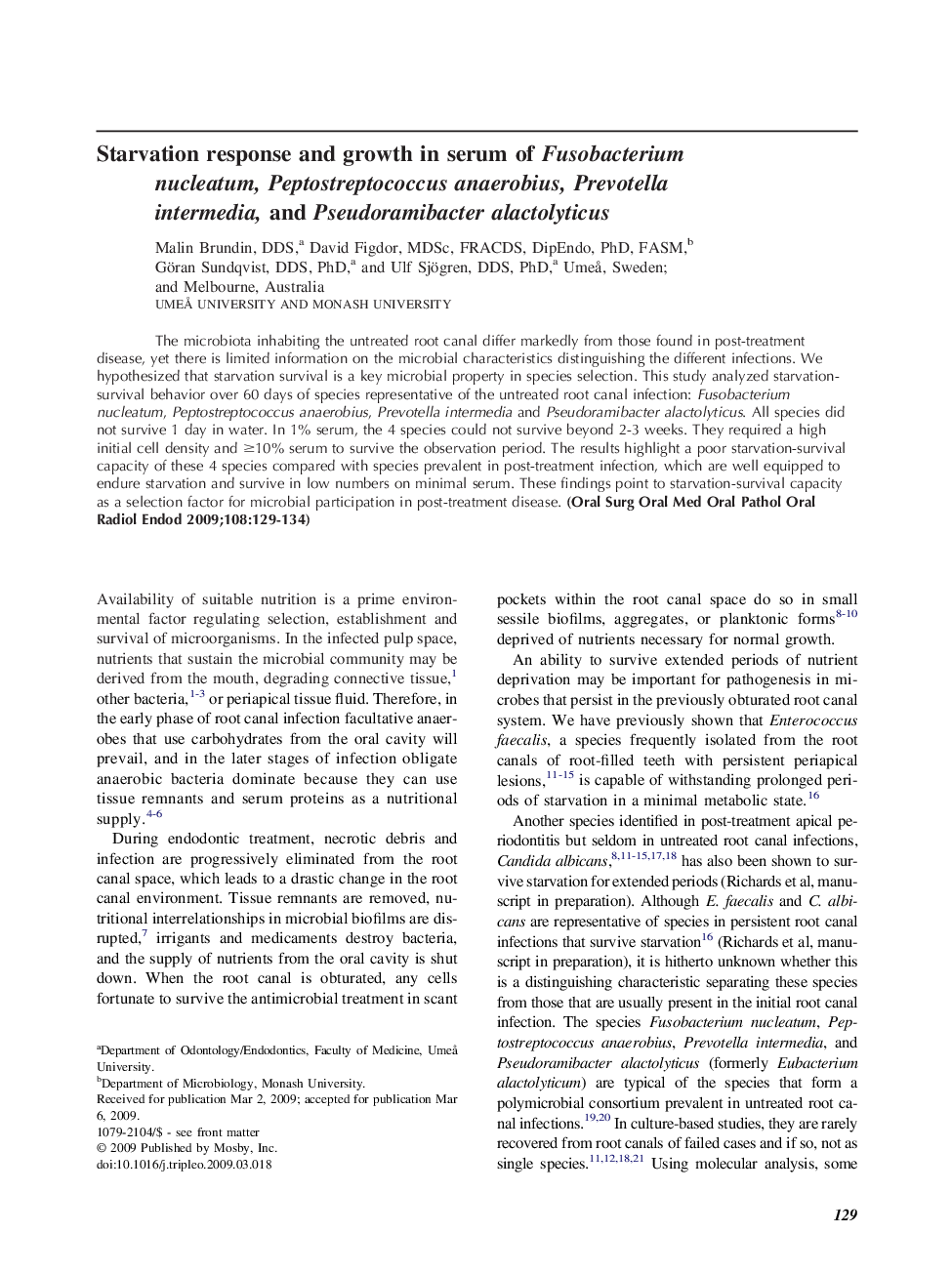| Article ID | Journal | Published Year | Pages | File Type |
|---|---|---|---|---|
| 3168198 | Oral Surgery, Oral Medicine, Oral Pathology, Oral Radiology, and Endodontology | 2009 | 6 Pages |
The microbiota inhabiting the untreated root canal differ markedly from those found in post-treatment disease, yet there is limited information on the microbial characteristics distinguishing the different infections. We hypothesized that starvation survival is a key microbial property in species selection. This study analyzed starvation-survival behavior over 60 days of species representative of the untreated root canal infection: Fusobacterium nucleatum, Peptostreptococcus anaerobius, Prevotella intermedia and Pseudoramibacter alactolyticus. All species did not survive 1 day in water. In 1% serum, the 4 species could not survive beyond 2-3 weeks. They required a high initial cell density and ≥10% serum to survive the observation period. The results highlight a poor starvation-survival capacity of these 4 species compared with species prevalent in post-treatment infection, which are well equipped to endure starvation and survive in low numbers on minimal serum. These findings point to starvation-survival capacity as a selection factor for microbial participation in post-treatment disease.
